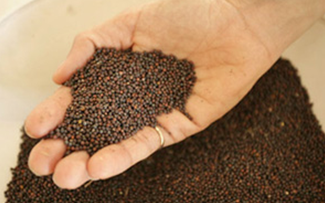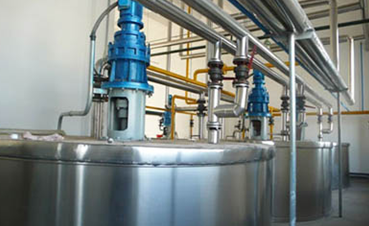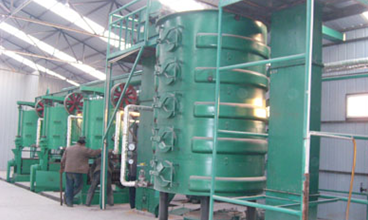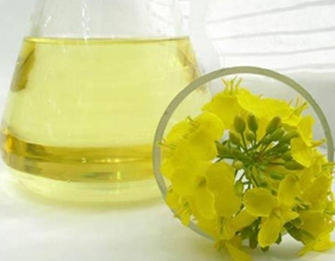Canola oil processing involves several processes. After preconditioning, canola seeds are crushed and flaked for later slight heated. These processes help to maximize oil recovery. The canola flakes are then “pre-pressed” in screw presses or expellers to reduce oil content from about 42% in the seeds (on 80% moisture content basis) to between 16%-20%. Screw press also compress the flakes into more dense cakes (called “press cake”) which facilitates later oil extraction.
Cleaning of Canola Oil Processing

Graded seed is cleaned by different methods including air aspiration, indent cylinder cleaning, sieve screening, or a combination of these. Cleaning ensures that the seed is free of extraneous plant and the other foreign material which is referred to in the industry as “dockage”. Seed generally contains less than 2.5% dockage following the cleaning process. Seed that has been cleaned is ready for subsequent export or for crushing into canola oil and meal.
Preconditioning of Canola Oil Processing
To get canola oil and meal, canola seeds are preconditioned by mild heat treatment, and moisture is then adjusted to improve subsequent oil extraction.
Canola Oil Processing Plant
Following are pictures of canola oil processing plant. The first one is canola oil pressing plant, and the second shows the refining workshop.


Canola & Canola Oil
Canola is an oilseed crop that was developed from traditional rapeseed by Canadian plant breeders during the 1970s. Canola is distinguished from traditional rapeseed by the greatly reduced levels of fatty acids, erucic acid and anti-nutritional compounds called glucosinolates. It is widely grown across Canada and several European countries.
 Canola oil is a kind of healthy and popular cooking oil. Canola oil is low in saturated fat and high in both monounsaturated fats and polyunsaturated fats. Moreover, it doesn’t contain euric acid or glucosinolates, both of which are potentially harmful to people’s health. Moreover, canola oil is ideal for many types of cooking, baking and salad dressing. It accounts for approximately 88% of salad and cooking oils, 71% of shortening oils, and 53% of margarine oils. Canola oil is used for similar purposes in the United States, where it represents 7% of total vegetable oil use.
Canola oil is a kind of healthy and popular cooking oil. Canola oil is low in saturated fat and high in both monounsaturated fats and polyunsaturated fats. Moreover, it doesn’t contain euric acid or glucosinolates, both of which are potentially harmful to people’s health. Moreover, canola oil is ideal for many types of cooking, baking and salad dressing. It accounts for approximately 88% of salad and cooking oils, 71% of shortening oils, and 53% of margarine oils. Canola oil is used for similar purposes in the United States, where it represents 7% of total vegetable oil use.

